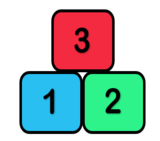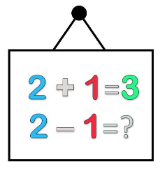Counting & Comparing

Counting is an important skill that young children need to learn, but it is far more than a rote activity. There are common errors and misconceptions that children encounter while learning to count. These lessons are designed to address each of these difficulties.

Counting is an important skill that young children need to learn, but it is far more than a rote activity. There are common errors and misconceptions that children encounter while learning to count. These lessons are designed to address each of these difficulties.
Numbers & Partitions

These lessons enable students to understand numbers and their partitions. Each of the lessons makes use of representations, such as the five-frame, ten-frame, and a part-part-whole diagram, to help students understand and solve the problems without counting.
Adding & Subtracting

These lessons provide daily opportunities for students to explore and make sense of using addition and subtraction in everyday life. They also help students develop reasoning strategies, which leads to confidence and fluency with basic facts.